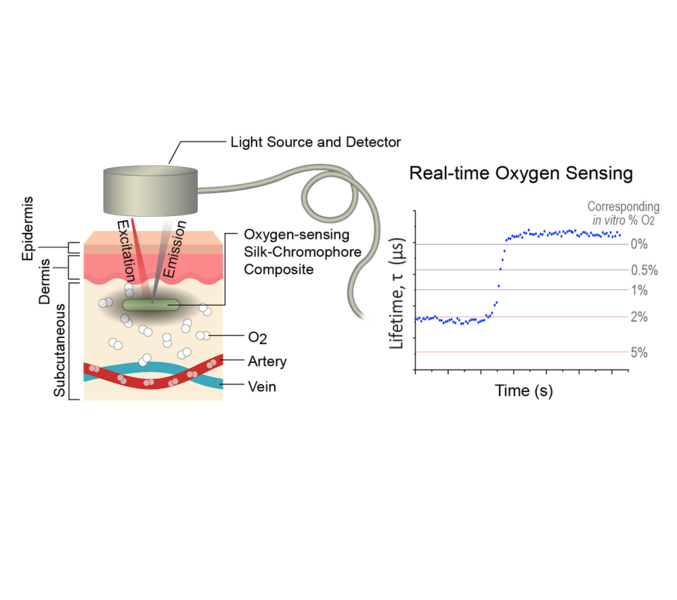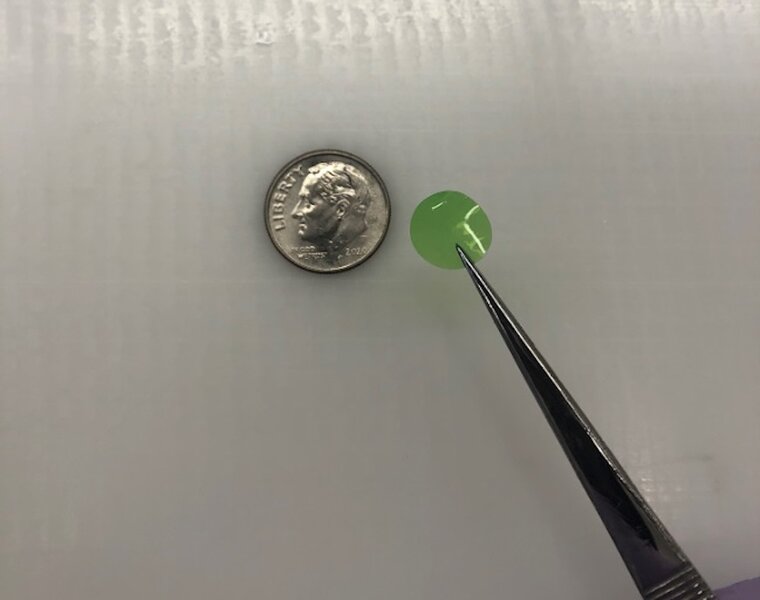Create a free profile to get unlimited access to exclusive videos, sweepstakes, and more!
Glowing silk-based tattoos measure oxygen in the blood
This tattoo is for my mom, this one is for my dog, and this one measures my blood.

Ever since The Six Million Dollar Man hit the small screen in the ‘70s, generations of people have been dreaming of what it might be like to be rebuilt better, faster, and stronger. Writers, filmmakers, and viewers have imagined countless cyberpunk futures filled with enhanced humans who have better control over their own bodies. Surely, the first step toward addressing a cyborg problem is being able to define it. Before we can enhance our biology, we need to be able to see it clearly.
David Kaplan, the Stern Family Professor of Engineering in the School of Engineering at Tufts University, and colleagues, have developed a tattooable gel-like material made of silkworm silk which is capable of sensing and reporting blood oxygen levels inside the body. Their findings were published in the journal Advanced Functional Materials.
To make their material, they start by cleaning silkworm silk and breaking it down from fibers into core protein material in a solution of water. Those proteins are then doped with a chromophore which gives the material color and reacts with oxygen in the environment. That material can then be formed into different shapes or injected directly into the body. In order for this to work, you need a material capable of achieving the required reaction which is also safe to use inside the body.
“People don’t always appreciate how unique this silk protein is. To make something like this work, you need something that works in water. You have to prepare it in water, process it in water, and use it in water. That eliminates a lot of things. It has to be tunable for degradation rate. It can’t interfere with the chromophore or other targets, and it has to be biocompatible,” Kaplan told SYFY WIRE.
Once inside the body, the silk-based sensor reacts with oxygen and glows when exposed to light waves which penetrate the skin. The intensity of the glow is dependent on the depth of the implanted sensor and may not be a good indicator of blood oxygen levels. Instead, researchers looked at the duration of the glow to get a measure of blood oxygen. The higher the oxygen level, the shorter the glow duration.
The degree of definition is such that you may not be able to get discrete percentages of blood oxygen, but you can get a real-time reading of whether you’re at optimum or dangerous levels. Moreover, when the material is transformed into a small, flat disk it can last in the body for a long time.
“I wouldn’t call it permanent, but if you increase the degree of crosslinking, they would certainly last months or years. We showed you can make a sponge out of the same protein, and it would last a couple of years before it starts to significantly degrade,” Kaplan said.
Today, the material is limited to measuring blood oxygen, but researchers are looking toward other measurements like glucose or electrolytes. Using the same technology, but changing some of the chemistry or receptors, one can envision a series of small tattoos which would give the wearer real-time data about important elements of their health. In essence, if it gets into your blood and can react chemically, you can probably design a tattoo to detect it.
Imagine a tattoo which discreetly tells you when you’ve had too much to drink, when you’re dehydrated while exercising, or when it’s time for a blood sugar boost. Future versions could also be readily readable without the need for high tech skin-permeating lights.
“In principle, this could be translated into literally looking at your skin and seeing color differences based on these little dots under the skin. That’s the ultimate goal here, tattoos that are visibly readable or that you could read with an iPhone with a quick scan and so on,” Kaplan said.
As tattoos become more prevalent — in 2021, 25% of people had at least one tattoo — one can envision a scenario in which these sensors are hidden inside larger artworks, making them useful to the wearer while remaining hidden from prying eyes.
It’s difficult to regret a tattoo in old age if it literally helped you get there in good health.
















